Why My Toenail Stop Growing?
Have you noticed a sudden halt in the growth of your toenails? While it may seem like a minor issue, changes in toenail growth can sometimes indicate underlying health concerns. Here are 12 signs that suggest it’s time to schedule an appointment with a dermatologist for a thorough evaluation.
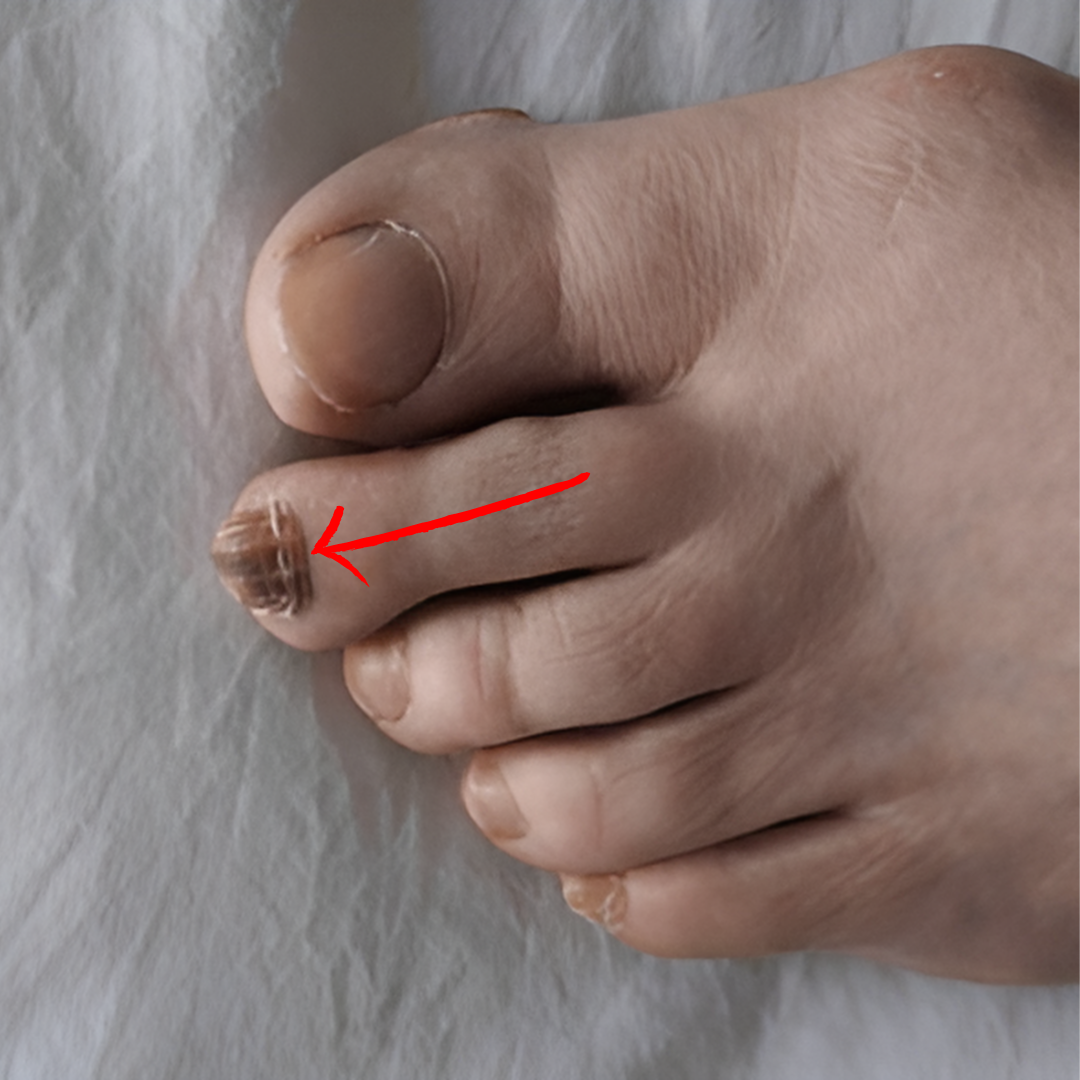
1. Melanoma under nail (Acral Lentiginous Melanoma)
If you see a dark streak under your toenail that’s new or changing, it could be a sign of melanoma, a very serious type of skin cancer. Melanoma can grow under your toenails slowly or quickly. It’s important to tell a doctor right away if you notice any strange changes in your toenails, so they can check it out and help keep you healthy.
- What could be causing my toenails to stop growing? Melanoma could be causing the dark streak.
- Are these changes in my toenails normal? No, they could indicate melanoma, a serious skin cancer.
- What should I do if I notice a dark streak? See a dermatologist immediately for a skin cancer check.
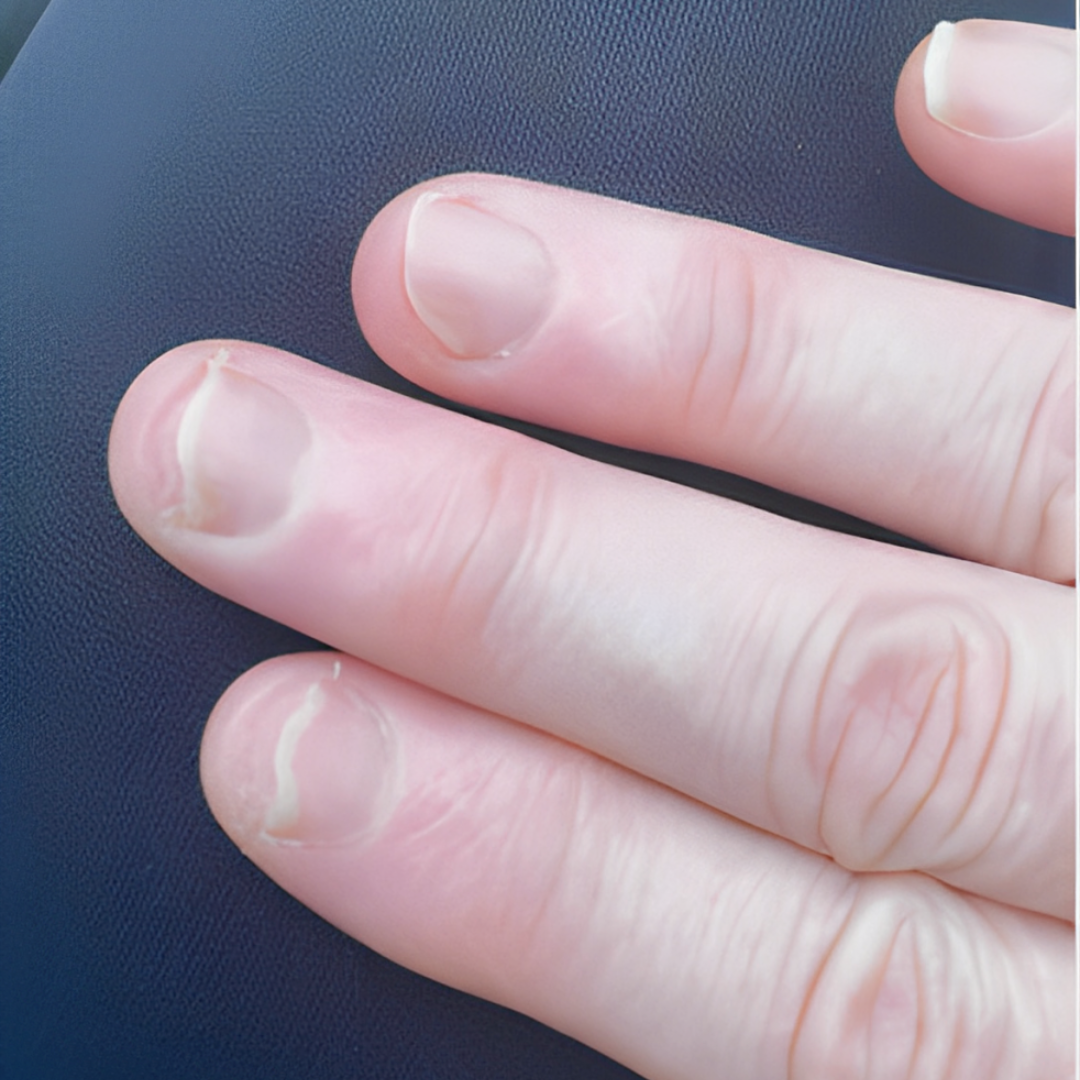
2. Nail lifting up (Onycholysis)
If your nail starts to lift up, it might mean you have a fungal infection, psoriasis, or maybe you hurt it somehow. It’s a good idea to see a dermatologist, a doctor who knows a lot about skin, to find out what’s causing it. They can help figure out the problem and suggest ways to make your toenail healthy again.
- How can I differentiate between harmless changes and signs of a serious condition? A dermatologist can diagnose the cause.
- Can I manage lifting toenails on my own? It’s best to see a dermatologist for proper treatment.
- What treatments are available? Treatment depends on the cause and may include antifungal medication or addressing underlying conditions.
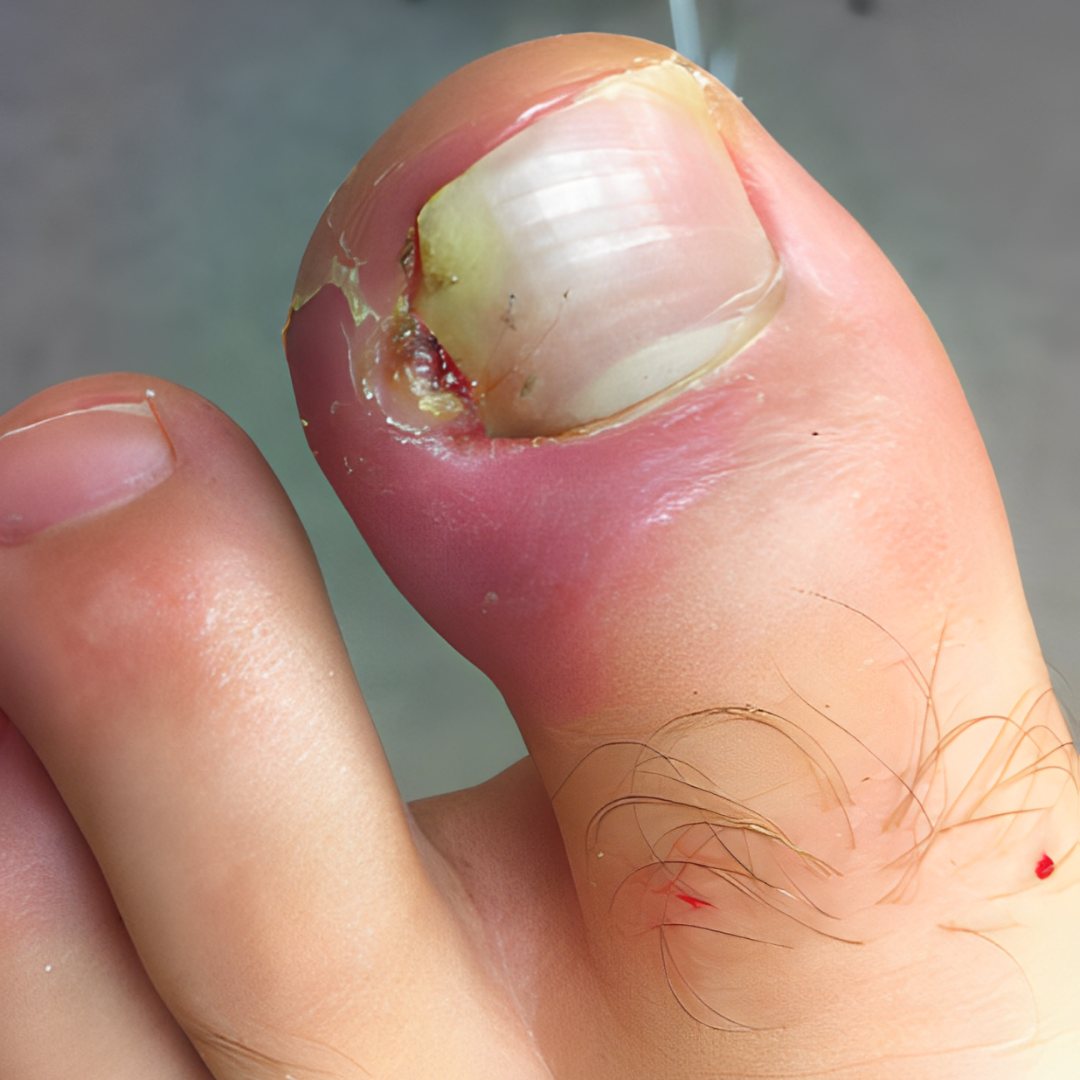
3. Infection around toenail (Paronychia)
If your toe looks red and swollen around the nail, it might mean there’s an infection. Infections can get worse if you don’t treat them quickly, so it’s important to see a doctor right away. They can give you medicine to help clear up the infection and make your toe feel better.
- What should I do if I have redness and swelling around a toenail? See a dermatologist for diagnosis and treatment.
- Can I treat it at home? Early-stage infections may respond to soaks and antibiotics, but severe cases require professional treatment.
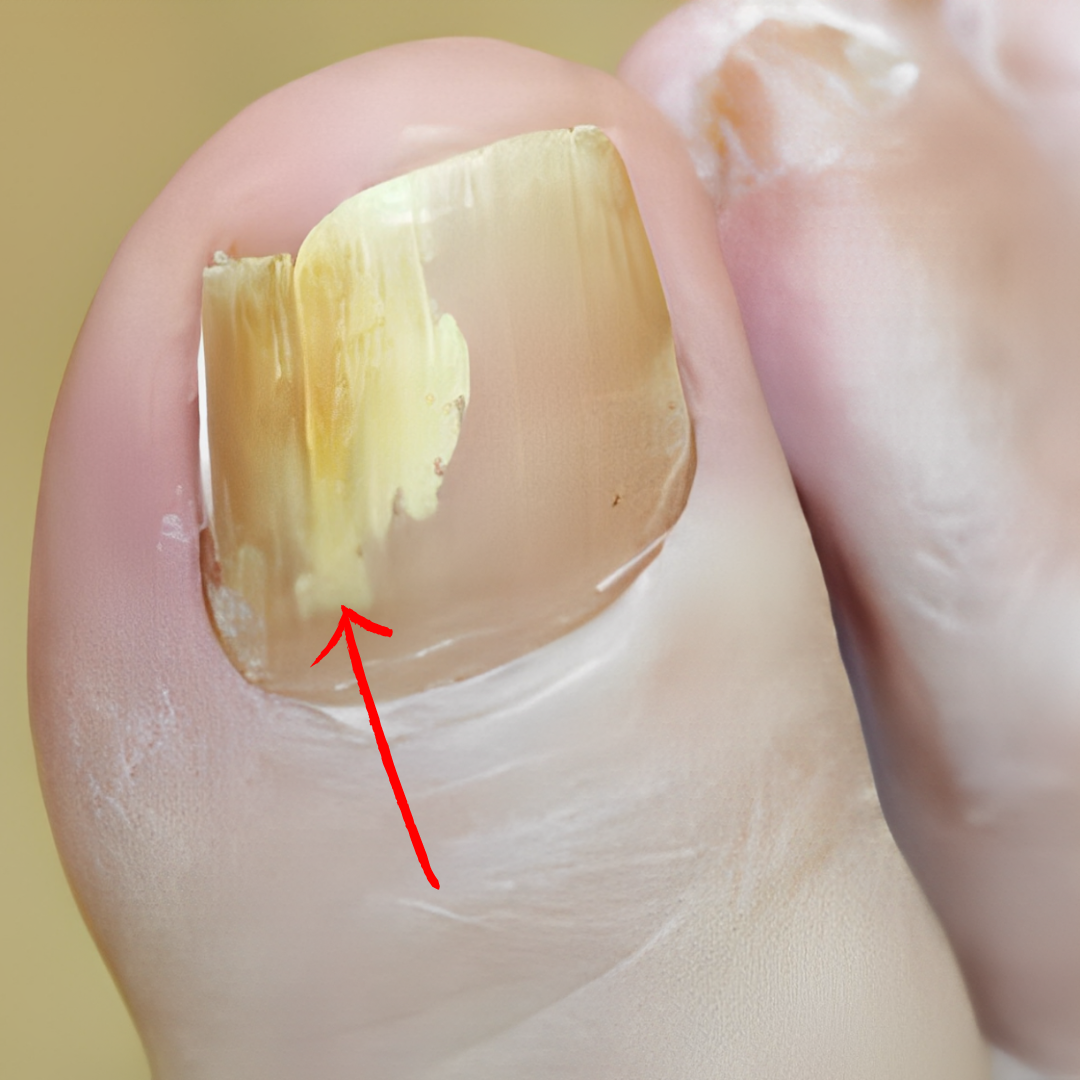
4. Infection under toenail (Paronychia)
If you notice a greenish-black color under your toenail, it could be a sign of a bacterial infection. It’s important to get help from a doctor because these infections can get worse if left untreated. A doctor can give you medicine to help clear up the infection and keep your toenail healthy.
- What causes a greenish-black color under the toenail? Bacterial infection.
- Can the infection worsen? Without treatment, it may worsen and require more extensive treatment.
- How can I get rid of the pain and tenderness? Treatment by a dermatologist can alleviate symptoms and clear the infection.
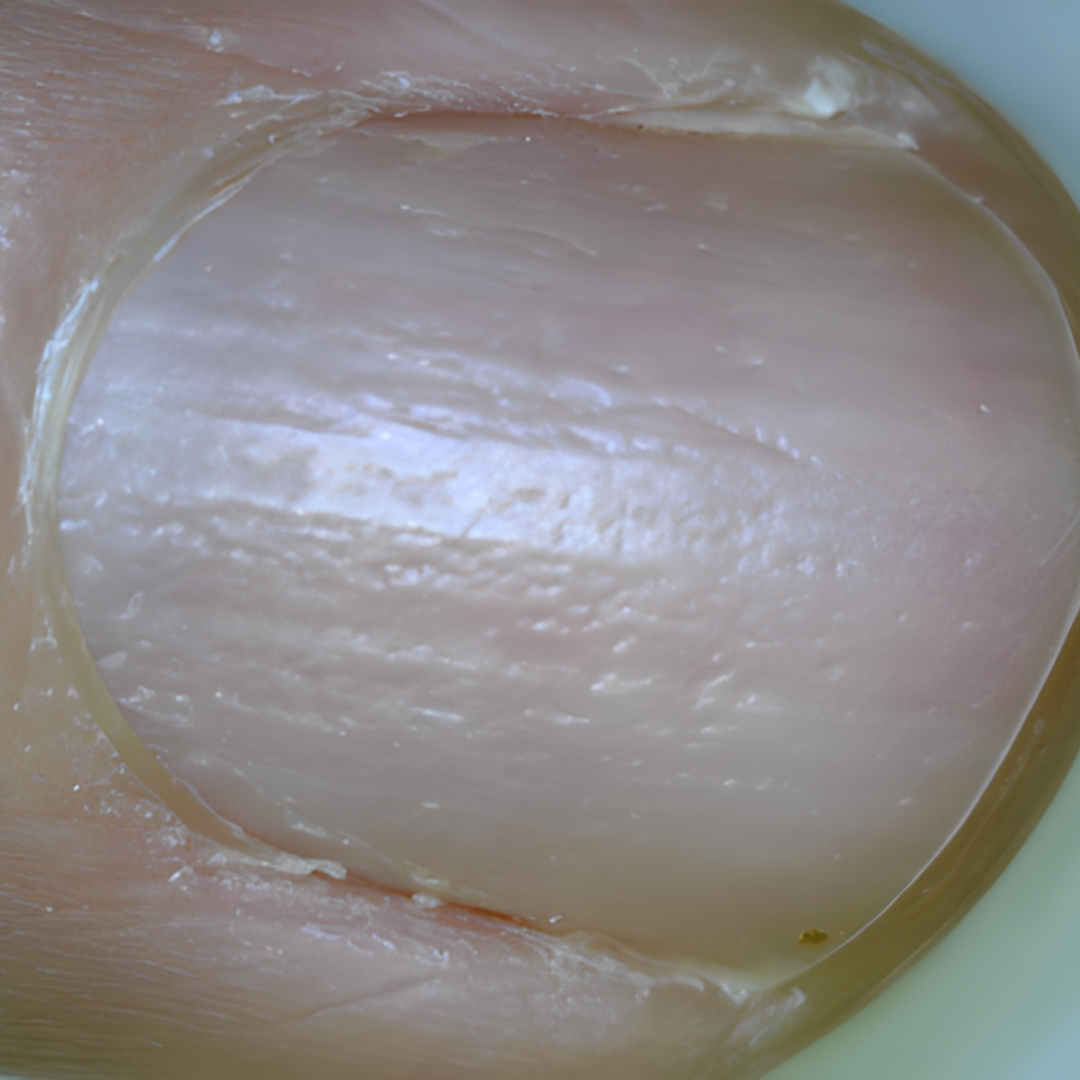
5. Fingernail with pits (Pitting)
If you see dents in your toenails that look like little holes made by an icepick, it could be a sign of a disease called psoriasis. This is a condition that affects your whole body, not just your nails. It’s a good idea to see a dermatologist, a special doctor who knows about skin, to find out what’s going on. They can help you figure out if it’s psoriasis and what you can do to feel better.
- What diseases could be causing pits in my toenails? Psoriasis, atopic dermatitis, or alopecia areata.
- How can I get a proper diagnosis? Consult a dermatologist, who can diagnose and treat underlying conditions.
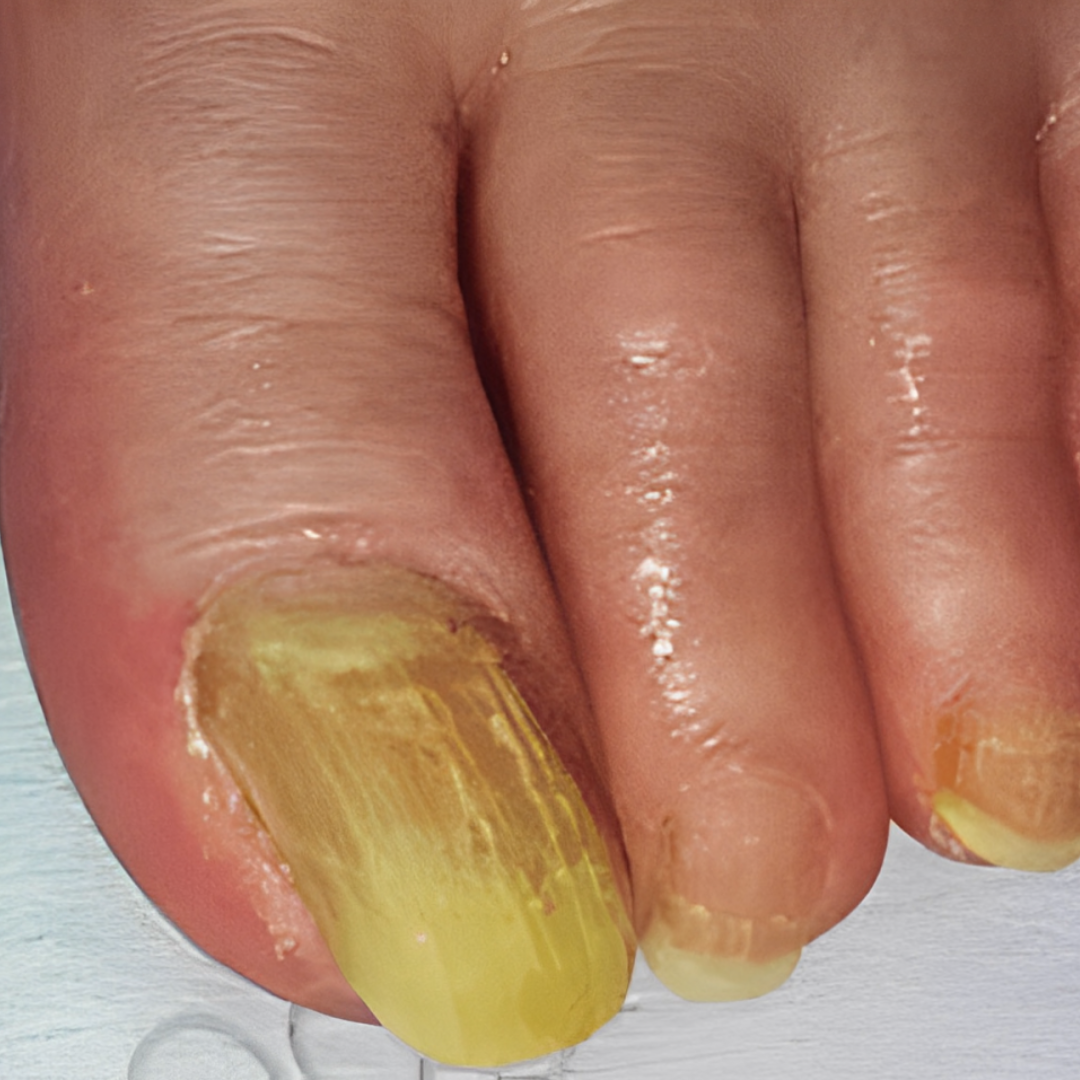
6. Yellow nail syndrome (Yellow Nail Syndrome)
If your toenails turn yellow, get thick, and stop growing, it might mean there’s something going on inside your body, like lung disease or rheumatoid arthritis. It’s important to see a doctor for a check-up to find out what’s causing it. They can help you figure out what’s wrong and what you can do to feel better.
- What underlying health issues could yellow, thickened toenails indicate? Lung disease, rheumatoid arthritis, or serious nail infections.
- Can I treat yellow nails at home? Treatment depends on the underlying cause and may require medical intervention.
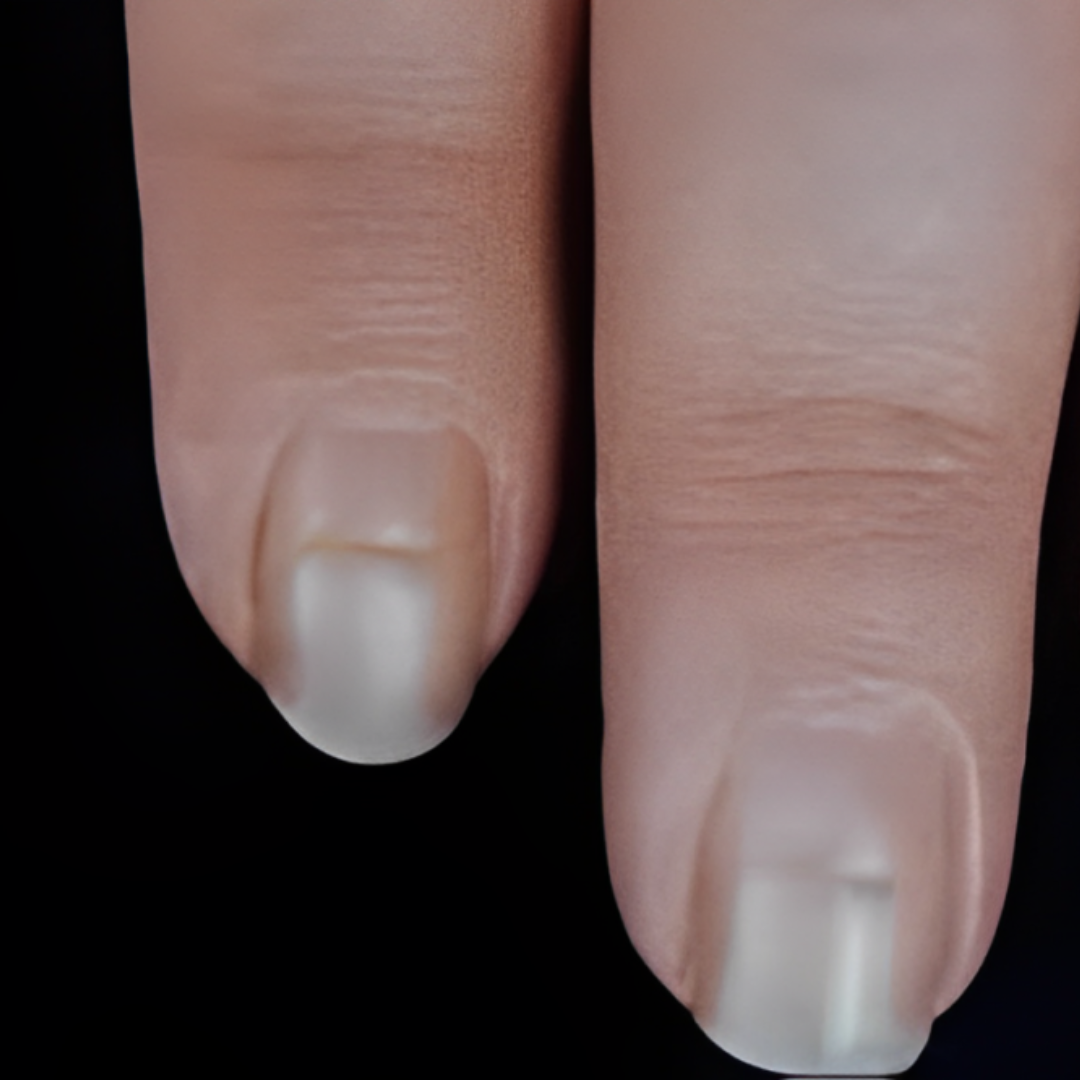
7. Deep groove in toenail (Beau Lines)
If you see deep lines or gaps in your toenails, it could be because of things like having a fever, getting hurt, having chemotherapy, or feeling really stressed out. It’s important to talk to a doctor if you notice this, so they can take a look and see what’s going on. They can help figure out why it’s happening and what you can do to make your toenails better.
- What causes deep grooves in toenails? Factors like fever, injury, chemotherapy, or stress.
- How can I determine the cause of grooves in my toenails? Consulting a dermatologist or primary care doctor is recommended.
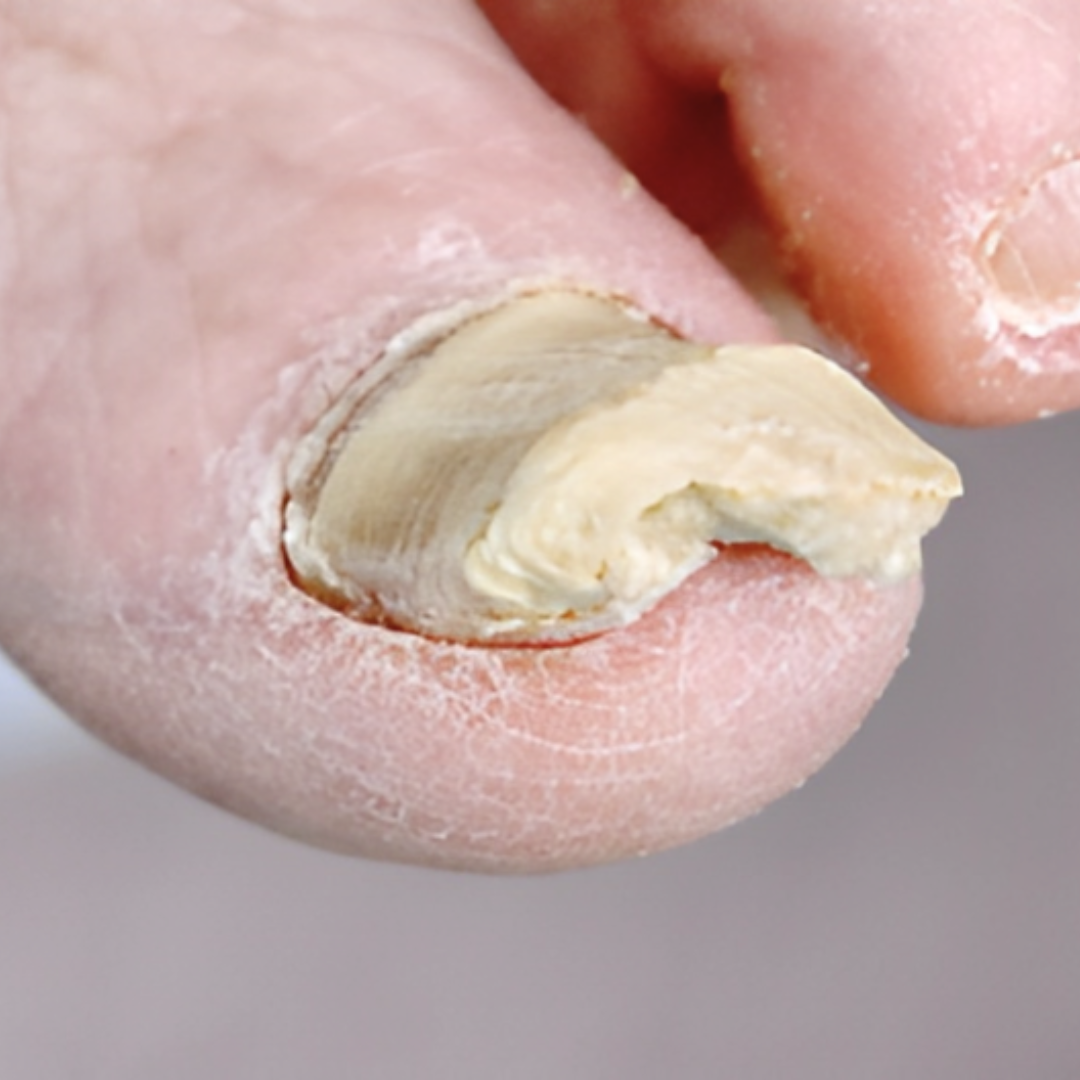
8. Thick, overgrown toenails (Onychogryphosis)
If your toenails get really thick and grow a lot, like a ram’s horn, it might mean there’s something going on, like psoriasis or problems with your blood circulation. It’s important to see a doctor or a foot doctor called a podiatrist to check it out. They can help figure out what’s causing it and what you can do to help your toenails.
- Why are my toenails thickening and overgrowing? It could be due to underlying conditions like psoriasis or circulation problems.
- How can I treat thickened toenails? Treatment may involve help from a podiatrist or dermatologist.

9. Spoon-shaped toenails (Koilonychia)
If your toenails are thin and shaped like a spoon, it could mean you don’t have enough iron in your body, or it might be a sign of other health issues. It’s important to see a doctor to find out what’s causing it. They can help figure out if it’s because of low iron or something else and give you the right treatment to help you feel better.
- What could cause thin, spoon-shaped toenails? Iron deficiency or other health problems.
- How can I get a proper diagnosis? Consult a healthcare professional for diagnosis and treatment.
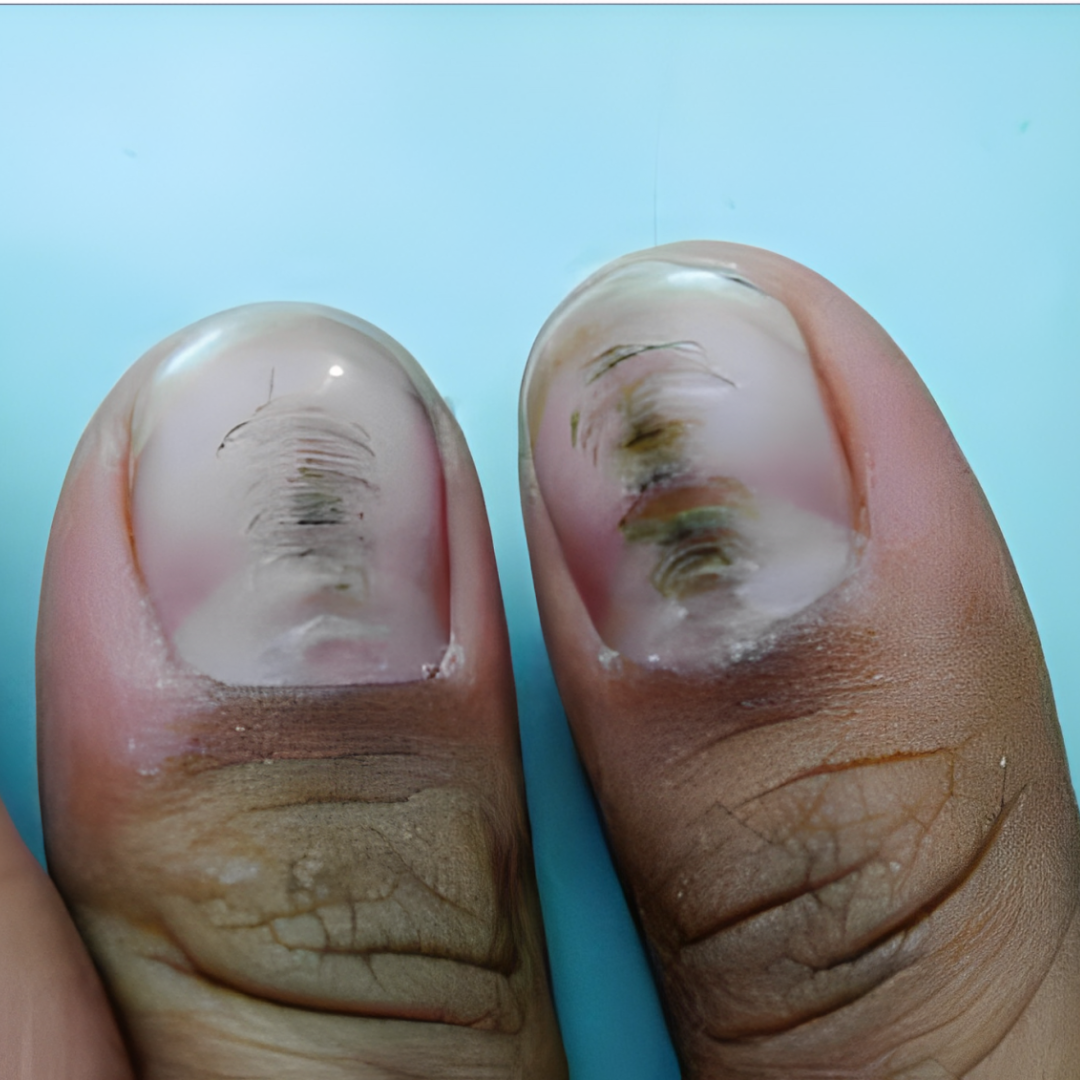
10. Washboard toenails (Onychotillomania)
If you see grooves and ridges in your toenails, it could be because you’ve been picking at or pushing back your cuticles without realizing it. It’s a good idea to see a dermatologist, a doctor who knows about skin, to help you stop this habit. They can give you tips to take care of your nails and keep them healthy.
- Why do I have grooves and ridges in my toenails? It may be due to a habit of picking at or pushing back cuticles.
- Can a dermatologist help with this habit? Yes, a dermatologist can provide guidance to break the habit and promote healthy nail growth.
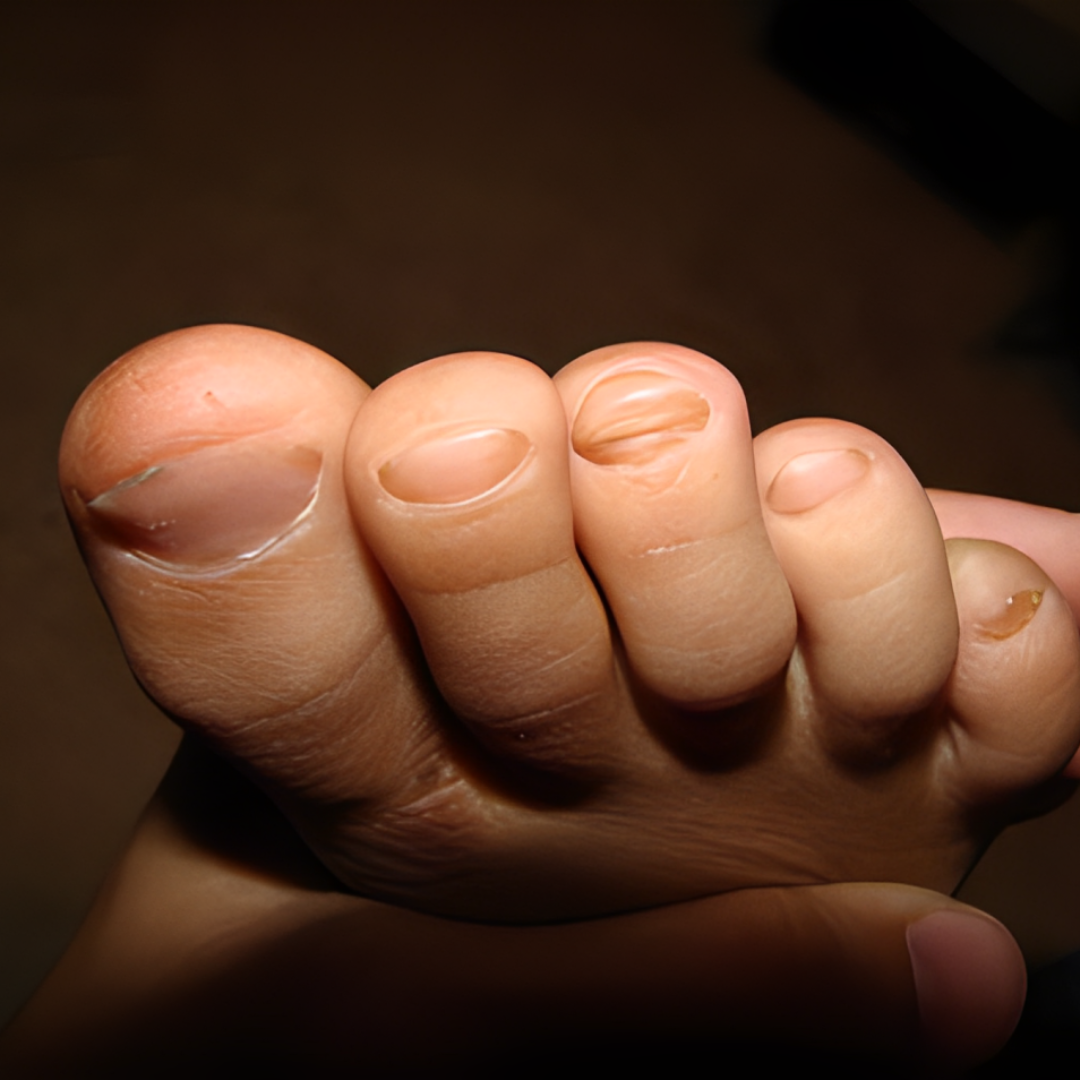
11. Curved toenails (Clubbing)
If your toenails start to curve, it might not always be a big problem, but it could be a sign of something happening inside your body. It’s important to see a doctor, like a dermatologist who knows about skin, to check it out. They can help figure out why your toenails are curving and if there’s anything else going on that needs attention.
- What could cause my toenails to curve downward? It may be harmless or indicative of underlying diseases affecting various organs.
- How can I determine the cause of curved toenails? Consult a dermatologist for evaluation and diagnosis.
12. Color changes
If your toenails change color, it might mean something’s up with your health. For example, blue nails could mean you’re not getting enough oxygen, and yellow nails might signal lung disease or an infection. It’s important to see a doctor if you notice these changes, so they can figure out what’s causing it and help you feel better.
- What diseases could be indicated by changes in toenail color? Various diseases affecting organs like the liver, lungs, heart, or kidneys.
- Should I be concerned about changes in toenail color? Consult a dermatologist if you notice significant changes to your toenail color for proper evaluation.

While not every change in toenail growth is cause for alarm, it’s essential to pay attention to these signs and seek professional evaluation when necessary. A board-certified dermatologist can provide accurate diagnosis and recommend appropriate treatment to address any underlying issues affecting toenail growth.
Don’t ignore changes in your toenails; prioritize your foot health and schedule a consultation with a dermatologist if you notice any concerning signs mentioned above.

Leave a Reply